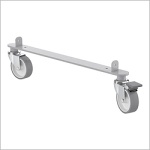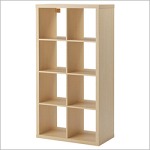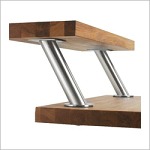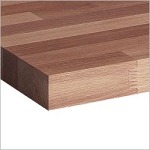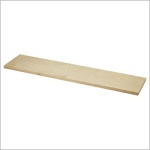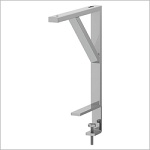
ARTICLES
Written By Rich For You.
Build The Best Standing Desk For Your Office.
When I first started working in retail many years ago, our job demanded we stand eight hours a day — Bloomingdales, Koenig's, Caldors, The Video Station, Waldenbooks — they all had us standing and walking around the store. And I never complained. Then I got into the 'big time' and for the the next 15-20 years, worked in corporate at a desk. When I started coaching, I built a huge desk out of birch plywood — it was beautiful — but I still sat for most of the day.
Lately, I've been reading about the healthy aspects of standing desks and learned about all the attributes of standing: better posture, more active, easy to reach items, etc. In addition, I tend to walk around while I coach because I feel it adds to the experience and allows me to think and communicate more clearly.
Unfortunately, standing desks are EXPENSIVE! They run into the thousands. I then ran into the Ikea Hackers site, where they take ordinary Ikea furniture and modify it into different designs. So I modified a few designs and came up with the standing desk you see at the top of the page. How did I do it? Here are the 'ingredients':
What were the results?
- It was a LOT cheaper to build than to buy. In addition, it's all wood and steel. It looks great.
- It was super-simple to construct. Just a drill, my 13-year-old son, and about 2 hours.
- I now have more room on my desk. I'm more organized and I keep the desktop clean.
- I feel better. Standing all day at first hurt a bit, but now I would NEVER go back.
- I no longer have to switch from standing-to sitting-to standing when coaching clients.
As you can tell from the finished desk image, I've also added a few drawers ($20 each) to the Kallax Bookshelf. I might even add more!
If you are interested in building a standing desk, drop me a line (richgee@richgee.com) or call - 203-500-2421. Would love to answer any questions you might have.
I have become a standing desk evangelist!
All images are from IKEA promoting their products. I love IKEA, their store, their service and all that they do. Check them out.
How To Better Control Your Time.
Time is the one thing you can never get back. So you need to be careful with it, don't waste it, don't hurry through it, and use it effectively. You need to CONTROL your time.
How do you do that? It's easy and it's hard — here are some tips:
Clear Your Desk.
I know . . . it's hard. But once it's done, it is so easy to focus without any distractions to instantly pull you away from the task at hand. Also there is the visual aspect of a clean desk. You FEEL better about yourself and your surroundings. It's easier to find things and important papers don't get lost.
So here's my strategy — Pile, View, Attack/File/Toss/LCB:
- Pile - Take everything off your desk and make a single pile of paper.
- View - Pick up and look at each piece of paper. You must make four piles:
- Attack - work on it immediately - something you can complete within a short amount of time.
- File - File it away for future access.
- Toss - Throw it away. I know it's hard - but most of your pile can go this route.
- LCB: Last Chance Bin - get a box and place it under your desk. If you are unsure of tossing something, put it into this bin. If you need it later, it's there. If not (after 3-6 months), toss it out. This bin works wonders.
Plan Your Day.
This is the hardest and surprisingly the easiest way to get a better handle on your time. Why?
If you go somewhere or if you're on a trip, you have a destination and a route to get there. That's called a plan.
Why is it when you get to work you don't architect the same thinking for your activities, meetings, and tasks? What needs to be done — what is it's priority — and when will you complete it?
Randy Pausch developed a very simple, yet effective template to help anyone plan their day. It's made up of four quadrants:
- Due Soon and Not Due Soon
- Important and Not Important
When you look at your "Attack" pile of work for the day, you usually work through it based on time in and time out. But importance flies out the window — most people aren't working on the most important and critical tasks. This tool helps them do it.
Which ones to work on first? Upper left! Which ones to work on last? Lower right! Here's a PDF template you can use.
Work On One Thing At A Time.
This is where we all fall down. We think we can 'multi-task' our work and guess what? We never get anything done or even worse, we do things in a haphazard fashion.
Take your Attack pile and your Activity List and make your way down each item. Once it's complete, check it off. Set aside time to work on your attack pile — don't answer the phone — don't let anyone bother you — don't let anything take your focus away from the task at hand until you are DONE. You can always return that phone call 15-30 minutes later or go see the person who wanted to see you.
Also — turn your email reminders OFF. You can get back to checking email when you're DONE.
At first it will be difficult. But when you start to see a clean desk, a planned out day, and REAL progress on your work. These basic behaviors will begin to kick in. Try it!

